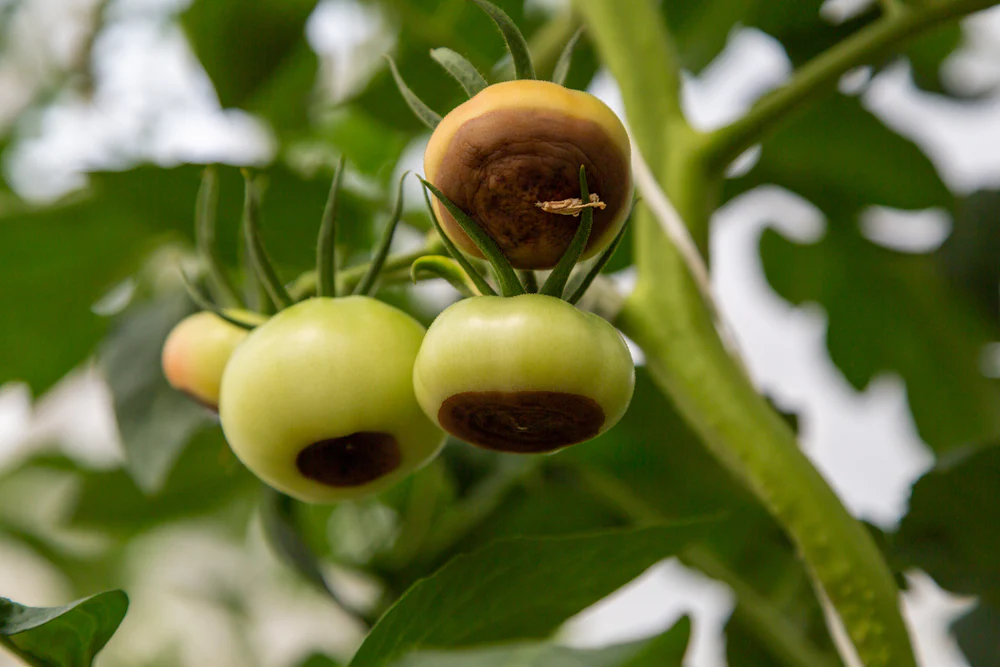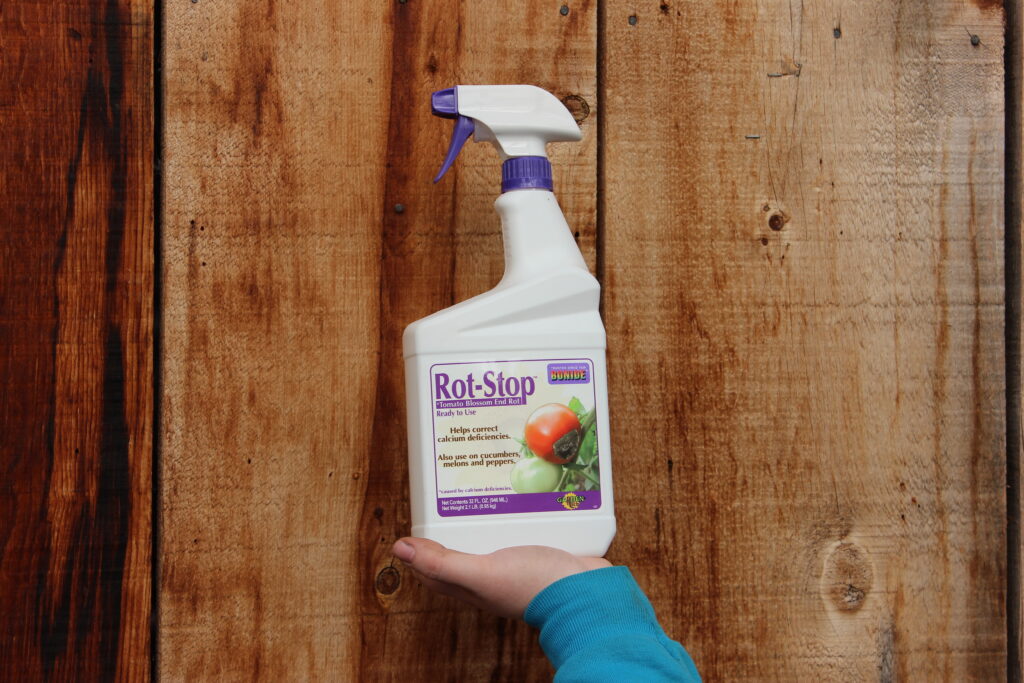Whether you grow them in attractive tubs on your patio or in a full-scale vegetable garden, you know there’s nothing better than the flavor of a home-grown tomato. BLTs, tomato jelly, salsa, and hamburgers topped with a big tomato slice…that’s the true acknowledgment that summer is here. But each year, home gardeners, waiting eagerly for their tomatoes to ripen, are faced with annoying tomato diseases and environmental stresses. The most common is blossom end rot.
Blossom end rot shows up as a water-soaked brown or black spot on the blossom end of the fruit. These spots enlarge rapidly and may grow together forming extensive areas of damage. Affected areas are commonly invaded by secondary fungi and bacteria that cause soft rot and fruit decay.

Blossom end rot commonly occurs when plants have grown rapidly and luxuriantly during the early part of the season and then are subject to fluctuation in moisture (too much or too little) when the fruits are at an early stage of development. These fluctuations or an excess of nitrogen fertilizer causes a lack of calcium in the developing tomato.
To control blossom end rot, mulch and water plants during dry spells to maintain uniform soil moisture levels. Avoid excessive use of nitrogen fertilizers or large quantities of manure. Plant tomatoes in well-draining soil and do not cultivate deeper than one inch within one foot of the plant.
Calcium sprays, such as Rot Stop, can be applied as a preventative measure or can be sprayed at the first sign of disease. If you have a lot of tomato plants and don’t want to deal with the hassle of spraying them all, slow-release tomato-specific fertilizers that are high in calcium can be applied to your garden beds. Looking for a more organic option, you can crush up eggshells and sprinkle them around your garden bed to give your tomatoes a much-needed source of calcium.

Blossom end rot is found wherever tomatoes are grown. The rotted areas are unsightly but the unaffected part of the fruit is edible. Blossom end rot usually disappears after the first group of tomatoes matures.

